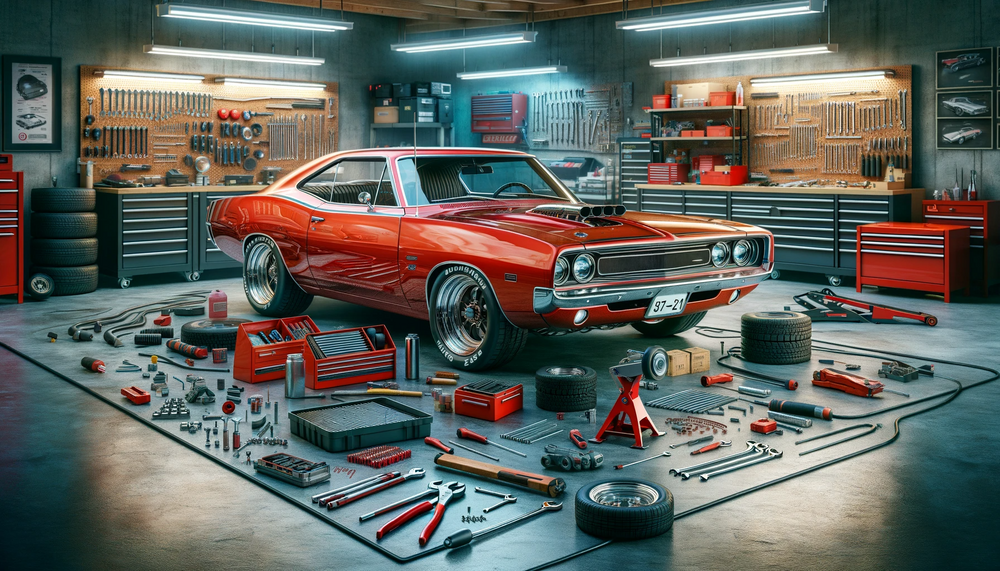The increasing popularity of electric vehicles (EVs) has changed the game in the automotive world, leading to innovative designs and unique challenges. One of the primary differences between EVs and traditional gasoline-powered cars is the noise level. While electric vehicles tend to have less engine noise, they can still be plagued by road noise, vibrations, and the hum of the electric motor. To create the perfect serene environment inside your EV, sound deadening is crucial.
Sound deadening for electric vehicles presents its own set of challenges, including preserving energy efficiency and maintaining lightweight designs for optimal performance. However, with the right strategies and use of materials, you can effectively address these challenges and expertly enhance the noise reduction capabilities of your EV, providing you with a driving experience like no other.
Join us as we explore the innovative world of electric vehicle sound deadening. From essential tips and tricks to the best material recommendations, we'll provide you with the necessary knowledge and tools needed to enhance the comfort and performance of your EV.
Unique Challenges of Sound Deadening for Electric Vehicles
Sound deadening in electric vehicles requires a specialized approach due to the various unique challenges that they present. Let's explore some of the key factors that differentiate electric vehicles from their combustion engine counterparts and influence the sound deadening process.
1. Different Noise Sources
Electric vehicles tend to have less engine noise, meaning the focus shifts to minimizing other noise sources, such as road noise, vibrations, and the hum of electric motors. This requires a more targeted approach that specifically addresses these unique sound sources.
2. Weight Management and Energy Efficiency
When deadening the sound in electric vehicles, it's essential to emphasize weight management and energy efficiency. The lighter an EV, the better its performance and range. As a result, the sound deadening materials used in EVs must be lightweight and energy-efficient to maintain optimal performance.
Choosing the Right Sound Deadening Materials for Your EV
When it comes to selecting sound deadening materials for your electric vehicle, consider the following options that best balance weight management and noise reduction:
1. Lightweight Sound Deadening Mats
These lightweight and easy-to-install sound deadening mats are made from a combination of materials such as butyl rubber, which offers excellent vibration damping and noise reduction properties. They can be applied to various parts of the vehicle, including doors, floors, and trunk areas, to minimize vibrations and road noise.
2. Aerogel Insulation
This cutting-edge material is extremely lightweight and provides impressive thermal and acoustic insulation properties. It’s an excellent choice for reducing road noise and vibrations in your EV while maintaining an energy-efficient design.
3. Noise Reduction Coatings
Coatings like spray-on insulation can provide a significant reduction in noise and vibration in your electric vehicle without adding too much weight. They are ideal for hard-to-reach or irregularly shaped areas, such as wheel wells and the underside of the vehicle.
Expert Tips for Effective Sound Deadening in Electric Vehicles
With the right materials in hand, follow these expert tips to achieve maximum sound deadening efficiency in your electric vehicle while preserving energy efficiency and weight management:
1. Target High-Noise Areas
Focus on areas that are most prone to noise transmission, such as door panels, floorboards, and wheel wells. By strategically treating these areas, you can significantly reduce vibrations and road noise in your EV.
2. Measure and Trim
Precise measurement and trimming of the sound deadening materials are essential for maintaining an unobtrusive, lightweight installation. Take your time and be accurate during this phase to reduce excess material.
3. Optimize Panel Seams
Panel seams are often weak points for noise transmission. Ensure panel seams are properly covered and sealed using noise reduction coatings or tape to improve their noise-blocking capabilities.
4. Test and Modify
After installation, test your EV’s acoustic improvements by driving at various speeds and on different road surfaces. This trial and error will allow you to identify and address any remaining noise issues.
Maintaining EV Performance After Sound Deadening
Once you've installed sound deadening materials in your electric vehicle, it's crucial to ensure that its performance has not been negatively impacted. To maintain energy efficiency and top-notch performance in your EV after sound deadening:
1. Monitor Vehicle Weight
Always be mindful of the added weight from sound deadening materials. Opt for lightweight materials and monitor your vehicle's total weight to ensure that it remains within acceptable limits.
2. Regular Checkups
Regularly check your EV's electric motor, battery, and other components for any signs of wear, malfunction, or inefficiency that could adversely affect its performance.
3. Keep Batteries Cool
Your EV's batteries perform at their best when they remain within a specific temperature range. Maintain proper thermal insulation to avoid overheating or excessive cooling, which can lead to decreased energy efficiency and potential damage.
Balancing Comfort and Performance in Your EV
With the right approach and materials, you can achieve optimal sound deadening in your electric vehicle while maintaining energy efficiency, weight management, and ensuring top-tier performance. By addressing the unique challenges of EV sound deadening and following the expert tips above, you can create an impressively comfortable and relaxing space within your electric vehicle without compromising its overall functionality.
Ready to begin your journey towards the ultimate electric vehicle comfort and performance? Explore our wide range of cutting-edge sound deadening materials designed specifically for electric cars, trucks, and vans. Don't hesitate to reach out to our team at B-Quiet for guidance and support in selecting the perfect materials to enhance your electric vehicle driving experience.











